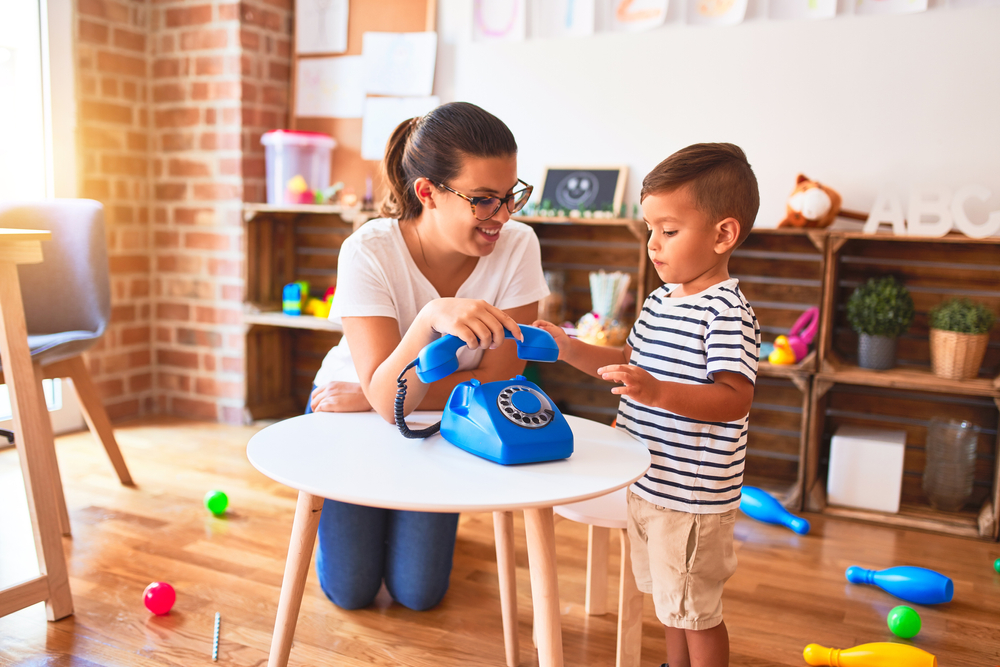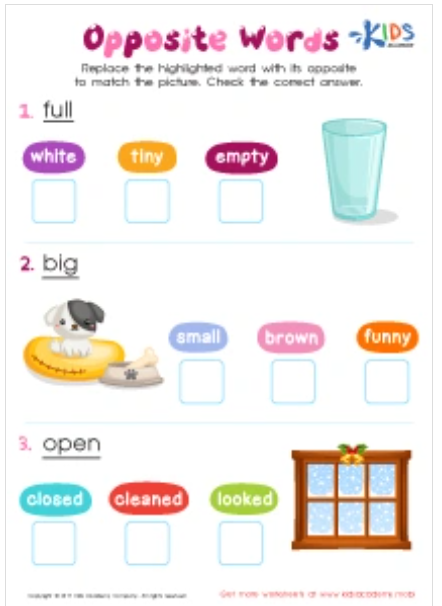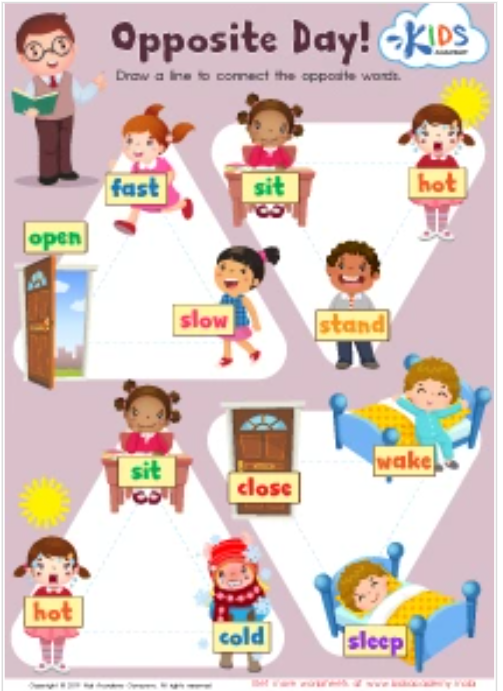-
English
-
English Pre-K
-
Unit 1: Early Literacy Skills
-
ABCs
- Pre-writing Activities
- Letter A
- Letter B
- Letter C
- Letter D
- Letter E
- Letter F
- Letter G
- Letter H
- Letter I
- Letter J
- Letter K
- Letter L
- Letter M
- Letter N
- Letter O
- Letter P
- Letter Q
- Letter R
- Letter S
- Letter T
- Letter U
- Letter V
- Letter W
- Letter X
- Letter Y
- Letter Z
-
Phonological Awareness
- Rhyming Words
- Letter Sounds B, C, D, and F
- Letter Sounds G, H, J, and K
- Letter Sounds L, M, N, and P
- Letter Sounds Q, R, S, and T
- Letter Sounds V, W, X, Y, and Z
- Letter Sounds A, E, and I
- Letter Sounds O and U
- Beginning Sounds
- Matching Letters to Sounds
-
ABCs
-
Unit 2: Vocabulary
-
Common Words
- Sorting Words into Categories
- Color Words
- Verbs and Adjectives
-
Sight Words
- Sight Words 'I' and 'Can'
- Sight Words 'You' and 'Like'
-
Common Words
-
Unit 3: Print Awareness
-
Parts of a Book
- Working with a Book
- Spaces Between Words
- Text and Illustrations
-
Picture Books and Poems
- Picture Book Text Features
- Poem Text Features
- Signs and Labels in the Community
-
Parts of a Book
-
Unit 4: Reading Literature
- Questions About Stories
- Discussing Stories
-
Unit 5: Reading Informational Texts
- Retelling Details in a Text
- Questions About a Text
- Connections Between Events
- Text Features
- Describing Illustrations
-
Unit 1: Early Literacy Skills
-
English Pre-K
-
Math
-
Math for Pre-Kindergarten
-
Logic and Geometry
-
Matching and Sorting
- Same and Different
- Which One Is a Little Different?
- Objects That Go Together
- Sorting by Color and Size
- Sorting The Same Group in Different Ways
- Patterns
-
Shapes
- Shapes in Our Environment
- Naming Shapes Regardless of Size
- Making Shapes in Preschool
- Comparing Shapes
- Relative Positions
- Sorting Shapes
-
Matching and Sorting
-
Early Number Sense
-
Numbers 1–5
- Counting to 3
- Counting to 5
- Arranging Objects up to 3 Objects
- Arranging up to 5 Objects
- Writing Numbers 1–5
-
Numbers 1–5
-
Numbers up to 10
- Counting to 10
- Arranging up to 10 Objects
- Number 0
- Writing Numbers 6–10
- Breaking Down Numbers 6-10
-
Logic and Geometry
-
Math for Pre-Kindergarten
The Fast Track to Teaching Verbs and Adjectives to Your Toddler
Bridging the gap between baby talk and mature language building involves laying the foundation of sentence building. What makes a complete sentence? At its most simplistic form, a sentence needs a subject and a verb.

Building Sentences with Verbs and Adverbs
Verbs for your toddler will consist of action words. Your professing youngster should accumulate at 40 verbs by the age of two.
Introducing New Verbs to Your Toddler
- Picture Books and Nursery Rhymes: reading picture books pairs audio with visual and allows your toddler to see at least one new verb on each page. Use a variety of books, including repetitive books and more traditional story books. Have fun acting out the events from the books.
- Animal Movements: Tap into your youngster’s boundless energy by having them use animal movements. Instead of walking to the kitchen, have them crawl like a bear or hop like a frog.
- Pretend Play: Dramatic play opportunities allow for your toddler to use different verbs according to what they are pretending to be. Your little construction worker may bang the hammer or paint the wall. A ballerina may bow for the audience or twirl across the room.
- Total Physical Response (TPR): Use hand and body gestures to accompany words that you're using with your toddler. For example, when teaching the verb sleep fold your hands and lay your check towards your hands, as if they were a pillow.
Sprinkling Adjectives into the Mix
You want your toddler to use verbs as descriptors in their speech. This will come handy later in development when writing sentences and paragraphs. Use these strategies to teach adjectives:
- Ask clarifying questions: When following your daily routine, prompt your preschooler to use adjectives by asking clarifying questions. If your toddler tells you that they see a bird, ask, “What color was the bird? Was the bird big or small?”
- Provide choices: Providing choices addresses issues for your child. On one hand, giving choices allows for your child to have some level of control and power. Additionally, your toddler will use descriptors to identify what she is referring to. Give her the option to choose the green sippy cup or the red one.
Relationships Between Verbs and Adjectives
As your child curates her library of verbs and adjectives, highlight the logical connections between frequently used verbs and adjectives. Teaching opposites is a foundational step to showing how words are connected. You can use these lessons from Kids Academy to practice these skills.
Encourage your toddler to use full sentences when speaking. There may be some confusion initially with verb tense, and structure, but consistent practice and model should sort this out.
References:
https://www.speechandlanguagekids.com/teaching-adjectives-in-5-easy-steps/
http://www.hanen.org/Helpful-Info/Articles/Verbs-Pave-the-Way-for-Language-Development.aspx
https://bridge.edu/tefl/blog/what-is-tpr-for-teaching-english-and-how-can-i-use-it/
By: Monica Edwards
English Language Arts Teacher, Curriculum Writer




